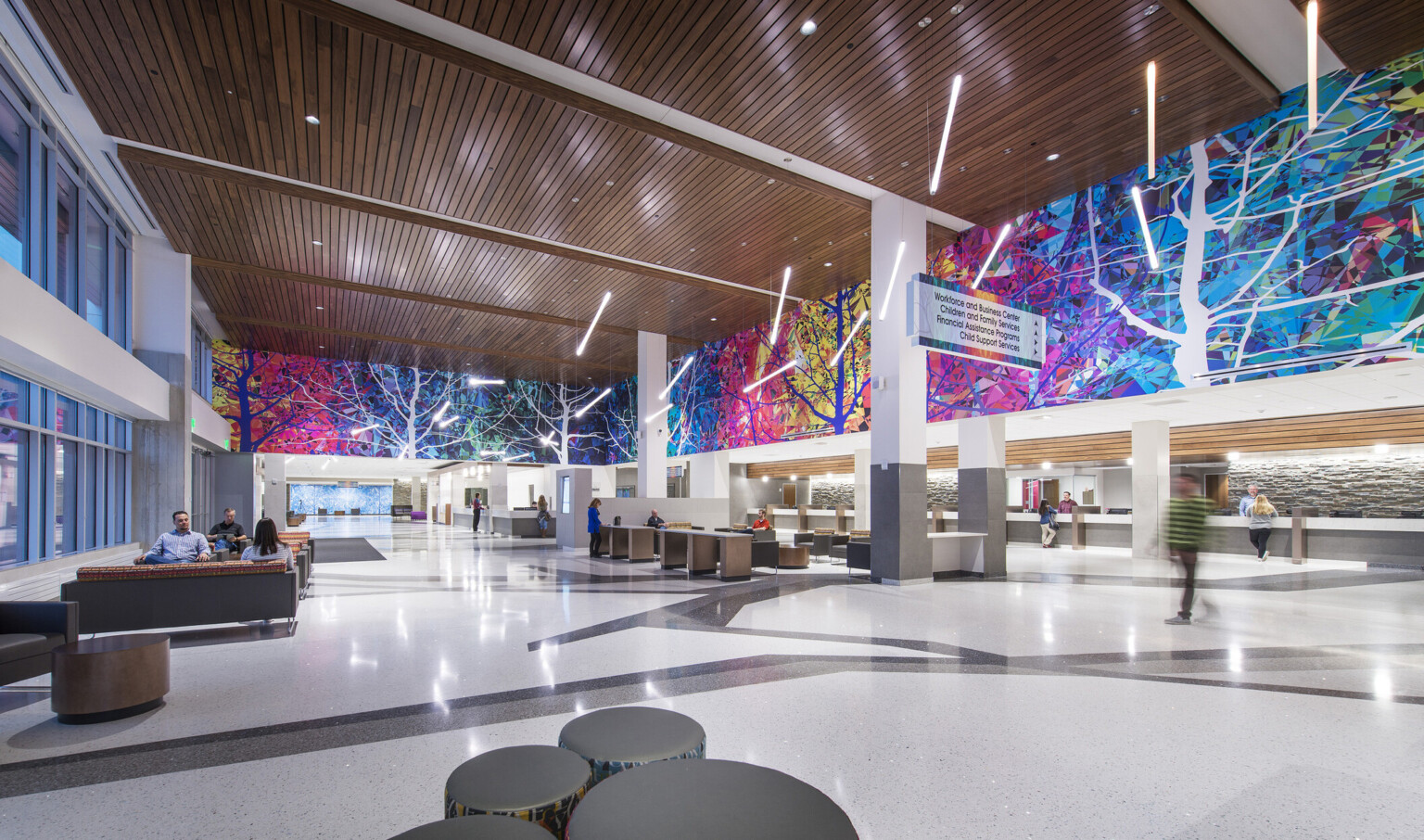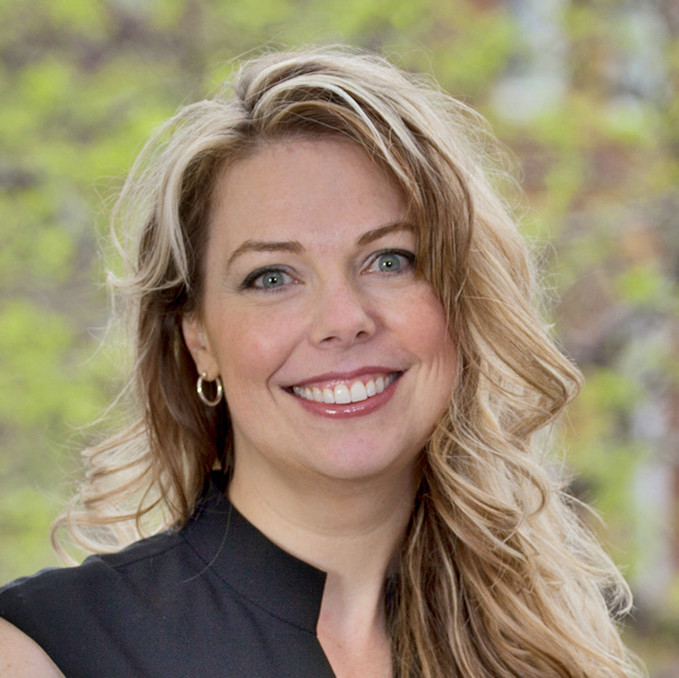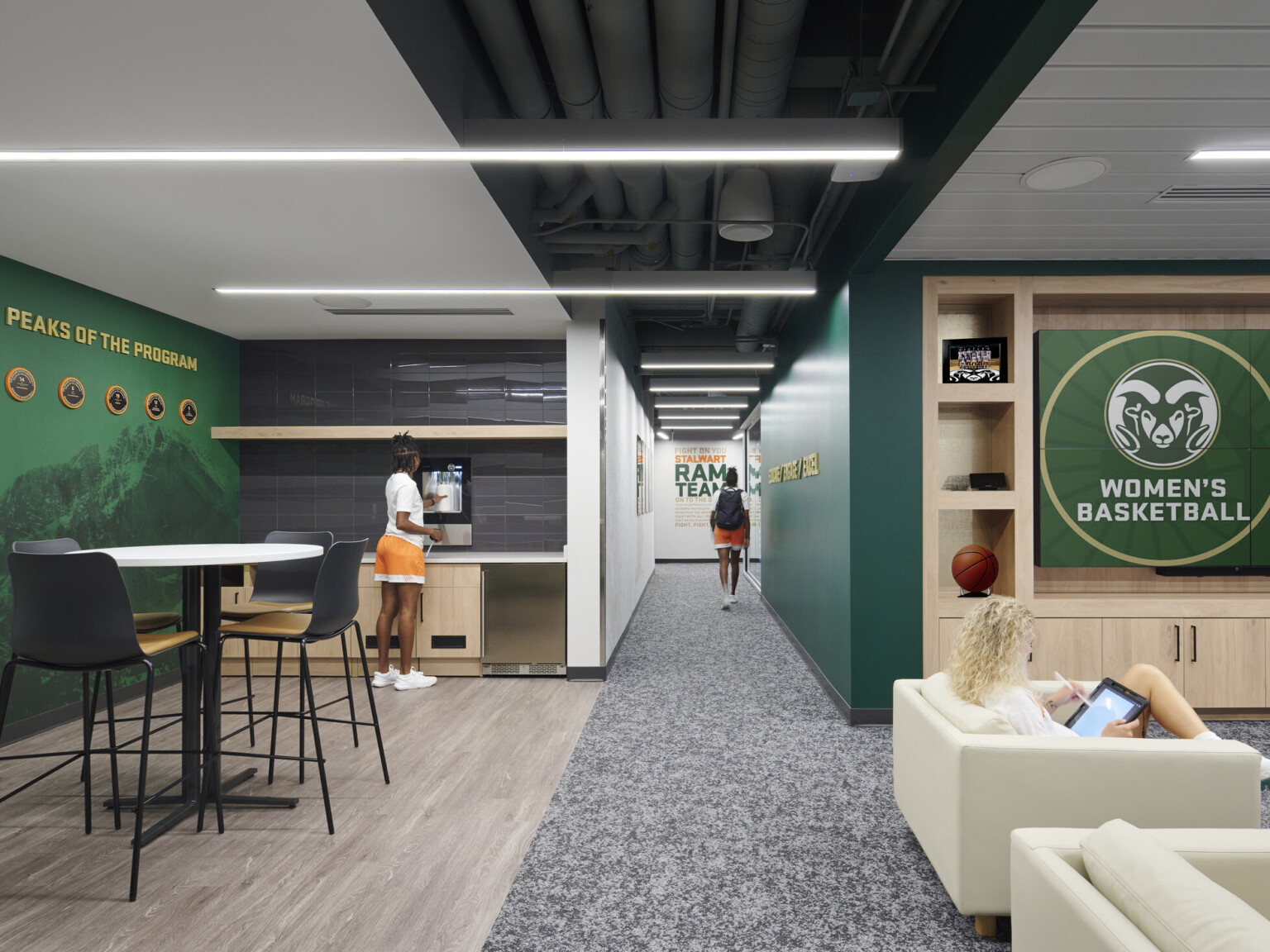
The Art of Space Programming for Public Workplaces

Community and Collocation
At the opening of an improved Larimer County Jail, employees were beside themselves about a space our team referred to throughout the design process as “the Hub.” Thinking of the Hub as a break room is like thinking of an experience at a Michelin-starred restaurant as dinner — in essence it might be correct, but in practice it levels off an elevated experience. A typical jail break room is made of dull cinderblock; the walls replace nature with barely functioning TVs; the atmosphere is anything but healing. But the Hub has new finishings; ample daylighting; and is such a pleasant environment that employees have started inviting their families there for lunch.
The Hub was a central feature of the new, incredibly versatile Intake, Transfer, and Release Center. These centers are often both literally and figuratively the “heart” of an adult secure treatment facility, where staff interact with the public and members of other departments. It was with that goal in mind that we programmed the site to serve as a physical connection to the adjacent Sheriff’s Building, encouraging both sets of staff to interact as one team.

It’s precisely this dual function of providing a restorative space while streamlining how people work that also informs our design of the Adams County Pete Mirelez Human Services Building, an adaptive reuse of a telephone equipment manufacturing facility in suburban Denver, Colorado.
Adams County wanted to co-locate fourteen different divisions, previously in five different locations, into the new 300,000-SF building. After interviewing all the people whose well-being was tied to a well-programmed space, what was immediately apparent was that the space neither supported the way the divisions wanted to work, nor how Adams County envisioned them interacting with one another to improve how they delivered services. The space standards were, in so many words, outdated. They didn’t account for shared spaces, areas to collaborate, or amenities for employees.
With high turnover and a general reticence to the new facility, the stakes were high in providing a highly functional and desirable work environment. The design team’s “ah-ha moment” came when we realized that we could reprogram the County’s square footage allotment for each employee to be distributed between personal space and shared space. In so doing, we were able to program the Health and Human Services Building precisely into its namesake: a space for the health and humanity of all who served in that building. This included best practices in workplace design; collaboration spaces; learning areas; and areas to take a mental break — all designed to be flexible and change with future needs.

Why Programming?
The overwhelmingly positive reaction to these facilities confirms that thinking of programming as a large game of human Tetris misses the mark. Just the opposite, programming is a way of seeing those who serve our community not as pieces to be wiggled into place, but as people whose space should work for them and their wellbeing.









